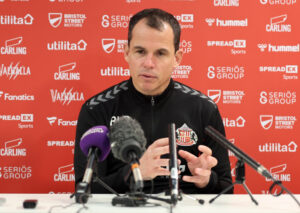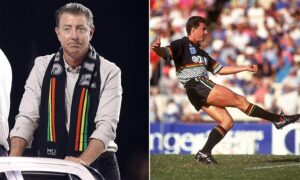
Sunderland recently announced that they had secured a new working capital facility.
Further details have emerged about the financing arrangement being utilized by the club’s ownership group.
A statement accompanying the latest financial accounts for the 2023/24 season confirmed that Sunderland secured external financing to clear an £8.2 million banking overdraft. This financial charge has now been filed with Companies House and is publicly accessible.
While specific financial details remain redacted, documents confirm that the lender is Akira B.V., a company linked to the holding entity of the Louis Dreyfus Company. Its majority shareholder is Margarita Louis-Dreyfus. As part of the agreement, Akira B.V. now holds a charge over Sunderland’s Academy of Light training facility and surrounding land.
Although the lender is closely connected to the club’s ownership, this marks a shift towards external borrowing. Previously, after Kyril Louis-Dreyfus took control of the club, Sunderland cleared external debts owed to the FPP group. The new loan is expected to carry interest and could influence any potential future sale of the club, though the strong ties between the two parties may mitigate any significant complications.
Under Louis-Dreyfus and Juan Sartori, the club’s debt has gradually increased. However, until now, it has primarily been internal debt to their holding company, Mercator, which does not incur interest. As of the latest accounts, this debt has grown to £19.82 million. The ownership group has repeatedly stated their intention to convert it into equity, though this has yet to be finalized.
In a statement last month, Sunderland confirmed the decision to secure the new financing, stating:
“SAFC’s banking overdraft facility, which stood at £8.2 million on 31 July 2024, has subsequently been cleared by the club after securing a working capital facility from an entity associated with the Louis-Dreyfus family.”
Sunderland’s Financial Standing
Journalist Phil Smith previously analyzed Sunderland’s latest accounts, noting that the club recorded an £8.1 million operating loss for the period, a slight improvement from the £9 million loss in their first season back in the Championship.
The reduced deficit was driven by increased turnover and significant profits from player sales, notably Ross Stewart’s transfer to Southampton. However, rising expenses offset these gains, as the club’s wage bill continues to grow in pursuit of Premier League promotion. Additionally, managerial changes—including the departures of Tony Mowbray and Michael Beale—contributed to increased costs. A major investment in Stadium of Light improvements also played a role in rising expenditures.
“No details have yet been provided on the debt structure, which could be a concern moving forward. If Sunderland were to take on additional external debt requiring repayment, there is a long-term risk that investment in the squad could be affected,” Smith wrote.
“Despite these concerns, the accounts reflect a club on an upward trajectory following years of decline. While full financial sustainability is not yet realized, Sunderland is in a stronger position than many Championship rivals. However, to fully capitalize on its potential, the club must secure promotion to the Premier League in the near future.”







